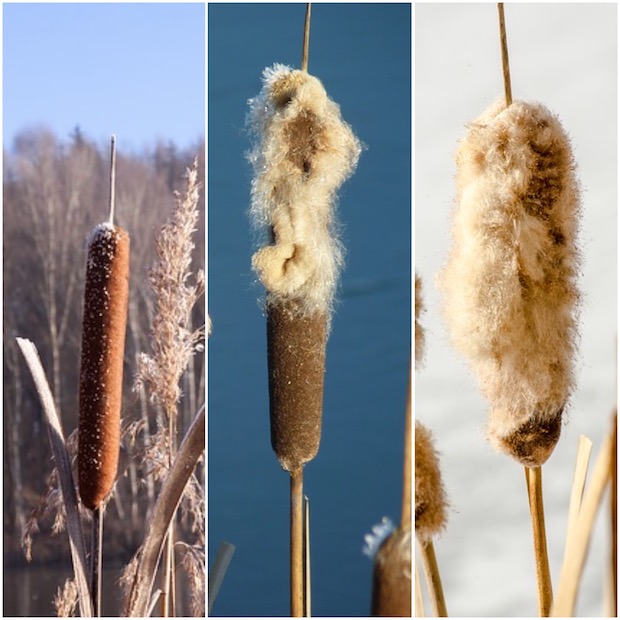Uses for Cattail Fluff: A great survival resource

The most common cattail (Typha latifolia) that we all recognize is a tall plant often found growing in dense stands in wetland areas, such as marshes and bogs. Various other species of cattail are found worldwide.
They all have upright leaves that resemble shoots of grass, as well as rigid stems that are topped with a long brown seed head that bears a resemblance to a sausage.
Cattail has been a staple food for many people for thousands of years. The parts of the plan that are edible change as the year progresses, but there’s nearly always some part of it that’s edible and can serve as needed food and calories.
It is a truly amazing plant and one that all outdoors people should know about and it’s a good example of plants that are all around us that can provide so much of what we need, we just need to know about them and know how to utilize them.
This article is focusing on the fluff part of the plant which comes from that sausage shaped seed head. You can collect it directly from the plant when it’s burst (watch out for the wind, it will fly everywhere!) or you can collect the whole heads and open them yourself.

Tinder
Once shredded from the seed head, the cattail fluff expands into a soft, string-like material – perfect for trapping sparks to create a campfire. Ensure you mix some other material with it as well. However, cattail fluff can burn very quickly, sometimes too quickly!
Char cloth
For starting a fire with old-fashioned flint and steel sets, or when using a magnifying glass to intensify the sun’s rays to start a fire, Char cloth is an ideal product to use.
The steps to create this handy material are quite simple; just pack a metal box with cattail fluff, pierce the box with a nail to make a small hole, then place the box into a campfire for 5 minutes. Use a stick or rod to remove the box from the campfire after some time, then let it cool. Now you have a premium char cloth!
Lamp wicks
The first people to roam America were the Paleoindians, and they had many resourceful ways to survive in the harshest conditions of the New World.
A simple oil lamp was one way that they lit their caves and rock shelters. A pinch of cattail fluff rising up out of oil made for a fine wick. Try it yourself! If for any reason you don’t have any ‘mammoth’ fat, try a block of Crisco with a cattail wick.

Insulation
You can use cattail fluff inside any item for warmth, such as your hat, some of your clothes, or your footwear. It’s like a plant-based variety of insulation.
Insect Repellent
In certain situations, the smoke from the seed head of a smoldering cattail can be a substitute for insect repellent. On a fire safe surface, put the smoking cattail head upwind from your location and the bug repelling smoke will waft over you for 20-30 minutes. You can even leave the seed head attached to the stalk and stick it in the ground as a stand.
If you have any comments then please drop us a message on our Outdoor Revival Facebook page
If you have a good story to tell or blog let us know about it on our FB page, we’re also happy for article or review submissions, we’d love to hear from you.
We live in a beautiful world, get out there and enjoy it.
Outdoor Revival – Reconnecting us all with the Outdoors.
